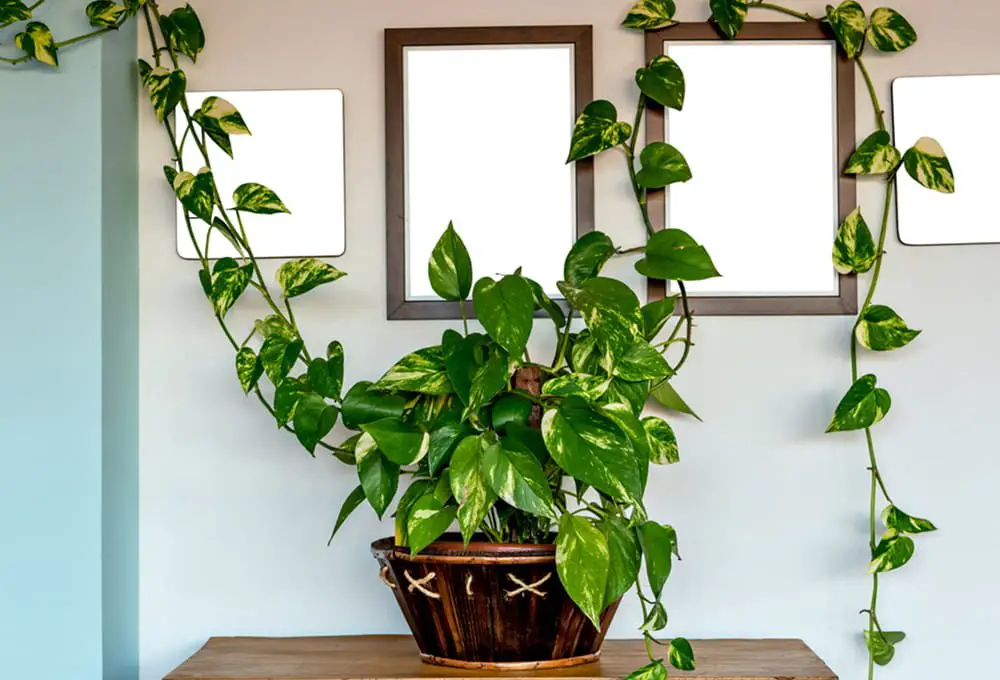
Light is an essential element to the growth of most plants, so choosing plants for north-facing windows can be a difficult task for indoor gardeners.
Not many house plants can cope with low light conditions, making it challenging to find one to liven up a room with no direct sunlight. Fortunately, the task is difficult, but not impossible. There are several options of plants for north-facing windows that can thrive in darkness or with little light.
Keep reading to find out which plants are suitable for lower light conditions and can bring beauty to your home.
Table of Contents
Snake Plant
Snake plants, also known as Dracaena trifasciata, are probably the most popular low light plants for indoor gardening enthusiasts. They come in many sizes and patterns, making this plant a decorative addition to any space.
These plants have spiky leaves and are very resilient, making them easy to maintain. In fact, snake plants do best when you give them little attention. They don’t like to be overwatered, so make sure to take it easy with the watering can.
Snake plants love bright but indirect light. Although low light might not slow down the overall growth of your snake plant, it will not harm them.
Peace Lily
Peace lilies are known for their abundant foliage and their beautiful white blooms. Even better, they don’t need a lot of light to thrive, making them the perfect plant for rooms with north-facing windows.
Peace lilies grow slowly compared to other house plants. Young plants may produce as little as one bloom at a time, but they flower throughout the year.
Furthermore, peace lilies are relatively easy to care for. It will be obvious when they need water because their leaves will begin to droop.
Devil’s Ivy
The Golden Pothos or devil’s ivy is an easy plant to take care of and a difficult plant to kill. They usually have dark green leaves with a yellow or white pattern. Their vines grow large lush leaves, but you have to make sure you keep pruning your devil’s ivy to keep the vines from overgrowing in their container.
Devil’s ivy plants prefer high humidity but can thrive in almost any condition, making them great for rooms with north-facing windows. They love shady areas but are still able to thrive in indirect sunlight.
Heartleaf Philodendron
Heartleaf Philodendrons are not only great for shady rooms with low light, but they are also popular starter plants based on how easy they are to take care of.
These plants don’t require too much maintenance as they thrive in many different environments and react well to changes.
Their leaves are smooth and instantly recognizable for their shape, hence the name of the plant. They prefer indirect sunlight. Their leaves scorch easily under direct sunlight.
Lucky Bamboo
Lucky bamboo, also known as Dracaena Sanderiana, is a popular house plant owned by many indoor gardeners for how interestingly it grows and its versatility.
These plants come in many sizes and can be grown in soil or water, making them great to decorate any room. Plus, you can shape lucky bamboo as it grows and prune it for a personalized touch. Try keeping them in bulb glass vases for an intriguing display.
Lucky bamboo plants love bright, filtered light, but they do scorch under direct sunlight. For this reason, they are ideal plants for north-facing windows.
ZZ Plant
The Zamioculcas, also known as the ZZ plant, is a succulent that grows well in low-light areas. ZZ plants are the perfect plant for livening up windowless rooms.
ZZ plants adapt well to various temperatures and humidity levels, so they work well in difficult and uncontrollable environments. They spring back easily from temperature changes. And don’t worry if you forget to water your ZZ plant. It can handle a few missed waterings.
Like many other plants that don’t require a lot of light, these plants tend to grow slowly. With patience and time, they can grow up to be up to three feet in height.
Swiss Cheese Plant
The Monstera plant, also known as the Swiss cheese plant, is an eye-catching addition to any space.
Their leaves start as small and heart-shaped, but they’re most known for the holes and slits in their leaves, hence their name. However, be aware that these markings do not appear until your Swiss cheese plant is mature, at which point it may grow to be quite tall.
They prefer bright, indirect light, but they still do well in low-light conditions. For optimal plant growth, place your Swiss cheese plant near a north-facing window.
Moth Orchid
If you’re looking for a striking houseplant to brighten up a room, this moth orchid will do just that. Known for their unique flowers resembling a moth, these plants don’t like too much direct sunlight.
Direct sunlight is bad for moth orchids, causing them to cease blooming or even die. Although they may survive near any window not facing west, moth orchids do best when placed near a north-facing window.
Make sure not to keep your moth orchid in complete shade. This plant needs at least a few hours of indirect sunlight a day to thrive.
Summary
Whether you’re looking for a starter plant or something that makes a statement, you have options when it comes to finding plants for north-facing windows. If you have the room, group together some of these plants in a north-facing window to create a lush, textured display.
Other plants that can thrive in north facing windows include:
- Mung beans
- Kentia Palm
- Cyclamen
- Cast-iron plant
- Aglaonema
Although many of these plants are low maintenance, you still want to ensure that you are regularly monitoring all of your plants and maintain good conditions for them to thrive.

north facing window plants – Priority Articles
Friday 2nd of September 2022
[…] Lucky bamboo plants love bright, filtered light, but they do scorch under direct sunlight. For this … […]